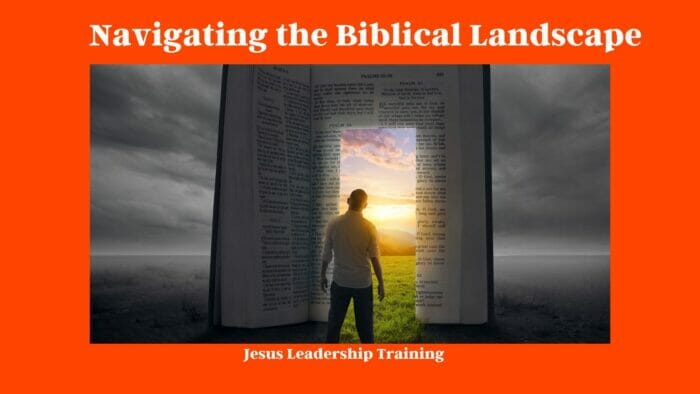The Bible, revered as the holy scripture in Christianity, is a treasure trove of spiritual wisdom, historical accounts, and moral teachings. It’s a sprawling anthology that narrates the story of humanity and its relationship with God. But how do we navigate this extensive and complex text? Let’s embark on this journey together.
Table of Contents
Understanding the Basics of the Bible
Genesis: The Beginning
The Bible commences with the Book of Genesis, which details the story of creation and the origin of humanity. Here, you’ll encounter the well-known stories of Adam and Eve, Noah’s Ark, and the Tower of Babel. It’s more than just a historical account; it lays the foundation for themes and characters that recur throughout the Bible.
Exodus: The Story of Liberation
The Book of Exodus presents the dramatic tale of the Israelites’ liberation from Egyptian slavery under Moses’ leadership. The ten plagues, the parting of the Red Sea, and the Ten Commandments are notable stories you’ll find here. This book underscores God’s profound commitment to his people.
Traversing the Biblical Terrain: Key Themes
Love and Compassion
One of the Bible’s central themes is love and compassion. This theme is illustrated in stories such as The Good Samaritan and teachings like “Love your neighbor as yourself” (Mark 12:31). Love, in the biblical context, is about selflessness and empathy.
Sacrifice and Redemption
The theme of sacrifice and redemption is prevalent throughout the Bible. It’s evident in the crucifixion of Jesus Christ, who died to redeem humanity’s sins. This theme illuminates the lengths to which God is willing to go to restore his relationship with humans.

Faith and Trust in God
Faith and trust in God form the backbone of many biblical narratives. It’s the faith of individuals like Abraham, who was willing to sacrifice his son Isaac at God’s command, that underlines the importance of unwavering trust in God’s plan.
The Role of Prophets and Leaders
Moses: The Reluctant Leader
Moses, a significant prophet in the Bible, led the Israelites to liberation from Egyptian slavery. His life exemplifies the power of obedience and humility, teaching us that great leaders often come from unlikely circumstances.
David: The Shepherd King
David, a shepherd turned king, is a character who embodies a range of human experiences – from humble beginnings, heroic exploits, personal failings, to deep repentance. His life serves as a stark reminder that even those chosen by God are not without flaws.
Jesus: The Ultimate Redeemer
Jesus Christ, the central figure of the New Testament, personifies love, sacrifice, and redemption. His teachings, miracles, and crucifixion offer a roadmap to understanding God’s plan for humanity and navigating the biblical landscape.

Contemporary Relevance of the Bible
Applying Biblical Lessons in Modern Times
The lessons in the Bible remain relevant today. They guide our ethical and moral decisions, teach us how to navigate life’s challenges, and provide comfort in times of distress. The Bible isn’t just a religious text; it’s a guide to living a fulfilled life.
The Bible and Social Issues
The Bible also addresses social issues like poverty, injustice, and equality. Its teachings encourage us to strive for a just society and uphold the dignity of all individuals. Thus, it serves as a moral compass in today’s complex social landscape.
Tips for Navigating the Biblical Landscape
Consistent Reading and Reflection
Dedicate time to regular reading and reflection. The Bible is not a book to be rushed through but savored and pondered upon.
Seeking Scholarly Guidance
It’s helpful to seek insights from biblical scholars who can provide historical and cultural context that enhances your understanding.

Engaging in Group Discussions
Joining Bible study groups or discussions can provide varied perspectives and foster a deeper understanding of the text.
Conclusion
Navigating the biblical landscape is an enlightening journey that offers spiritual, moral, and practical guidance. With consistent reading, scholarly input, and thoughtful discussions, you’ll be able to unlock the profound wisdom this sacred text holds.
FAQs
- What is the best way to start reading the Bible?Starting with the New Testament, particularly the Gospels, can be a good way to become familiar with the main teachings of Christianity.
- How do I interpret the Bible?Bible interpretation requires understanding the historical and cultural context. It’s also crucial to consider the genre and the intended message of each book.
- Why are there different versions of the Bible?Different versions arise from varied interpretations and translations from the original Hebrew and Greek texts. Each version aims to make the Bible more accessible and understandable to different audiences.
- Does the Bible address modern-day issues?Yes, the Bible addresses themes like love, justice, and morality, which are relevant to modern-day issues. However, interpretations and applications can vary.
- Is the Old Testament still relevant to Christians?Yes, the Old Testament is vital as it lays the foundation for the teachings found in the New Testament. It provides context for the life and work of Jesus Christ.



